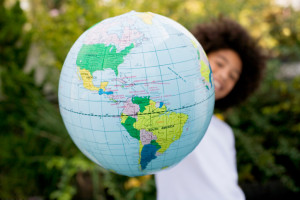 There are many diverse religions and almost every day is sacred for somebody, some place in the world. Having awareness and respect for different world religions and holidays, even if they differ from one’s own beliefs, can help you better navigate an increasingly complex world. The exact date of many significant religious holidays varies from year to year.
There are many diverse religions and almost every day is sacred for somebody, some place in the world. Having awareness and respect for different world religions and holidays, even if they differ from one’s own beliefs, can help you better navigate an increasingly complex world. The exact date of many significant religious holidays varies from year to year.
Buddhism
They are approximately 490 million Buddhists in the world. Buddhism is based largely on the beliefs and teaching of Siddhartha Gautama, known as Buddha. He is also referred to as the “awakened one.” Buddha is thought to have lived sometime between the 4th to 6th centuries BC in India. The vast majority of the world’s Buddhists live in Asia in the countries of Japan, China, Vietnam and South Korea.
- Vesak (first full moon in May)
This holiday commemorates Buddha’s birthday.
- Bodhi Day (December 8)
Bodhi Day honors the day Buddha experienced enlightenment.
Christianity
Christianity is the most predominant religion on the planet. There are approximately 2.2 billion believers, which is roughly one third of the global population. Christians live on every continent with the largest concentrations in the Americas, Europe and Sub-Saharan African. There are many diverse Christian denominations including Protestants, Anglicans and Catholics, who are the largest group. The Vatican estimates there are 1.2 billion Catholics with over 40 percent of them calling Latin America home.
- Easter (late March or early April)
Easter celebrates the day Jesus Christ rose from the dead after his crucifixion.
- Christmas (December 25)
Christmas is the day of Christ’s birth.
Hinduism
With roughly one billion believers, approximately 15 percent of the world’s population identify as Hindu. Over 90 percent of the world’s Hindus live in India. There are two major traditions or beliefs systems in the Hindu religion; Vaishnavism and Shaivism. Vaishnavism focuses on the worship of the god Vishnu and Shaivism is organized around the veneration of the god Shiva.
- Makar Sankranti or Pongal (mid-January)
This religious festival last for four days and is particularly important in southern India. It recognizes the beginning of sun’s journey northward.
Islam
Islam is the world’s second largest religion and has approximately 1.8 billion followers. Adherents of Islam are called Muslims. The Qur’an is the holy book of the religion and is believed to be the verbatim word of Allah (God). Most Muslims are either Sunni or Shia. The majority, 75–90 percent, is Sunni, and approximately 10–20 percent is Shia. Islam is also one of the world’s fastest growing religions.
- Eid al-Fitr (July)
Eid al-Fitr marks the end of Ramadan and a month of fasting from dawn to sunset.
- Eid al-Adha (September or October)
This holiday lasts for four days. It is customary to sacrifice an animal during Eid al-Adha. The meat is then given to family, friends and the poor.
Judaism
There are estimated to be about 14 million Jewish people in the world. There are many countries that have a small Jewish population, but 82 percent live in Israel or the United States. The Jewish faith is largely based on the Torah, the main scripture of the religion. Hebrew is the language of Judaism.
- Rosh Hashanah (mid – September to early October)
Rosh Hashanah celebrates the Jewish New Year and last for two days. It is believed to be the day when God made Adam and Eve.
- Yom Kippur (mid-September to early October)
The holiest and most significant day of the year for Jews, Yom Kippur always follows Rosh Hashanah. It is called “Day of Atonement.” Many people who consider themselves Jewish, but don’t regularly practice any Jewish customs, will fast, refrain from working and even go to synagogue on Yom Kippur.
These religions have five of the largest followings. However, there are many more that are just as important to their believers.

